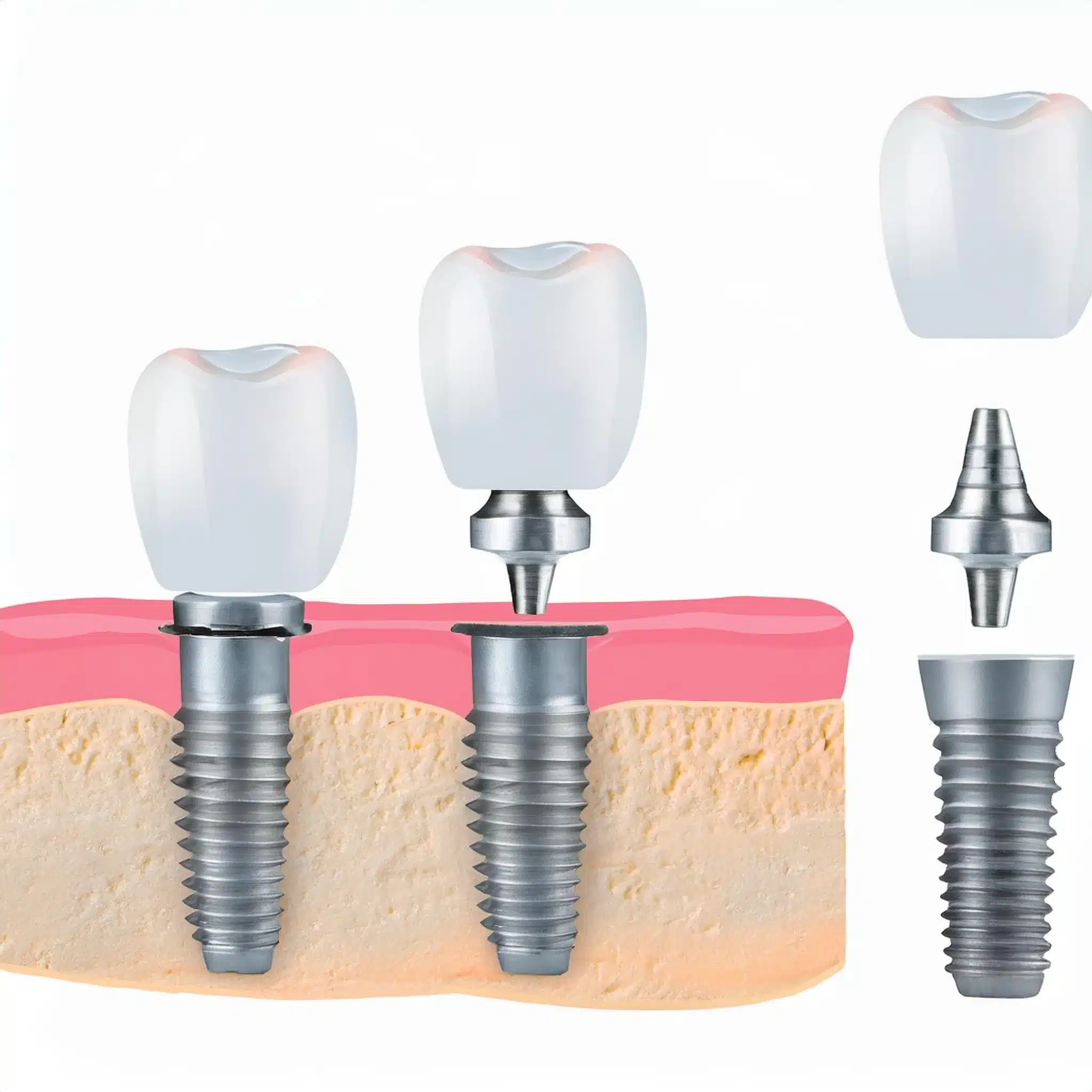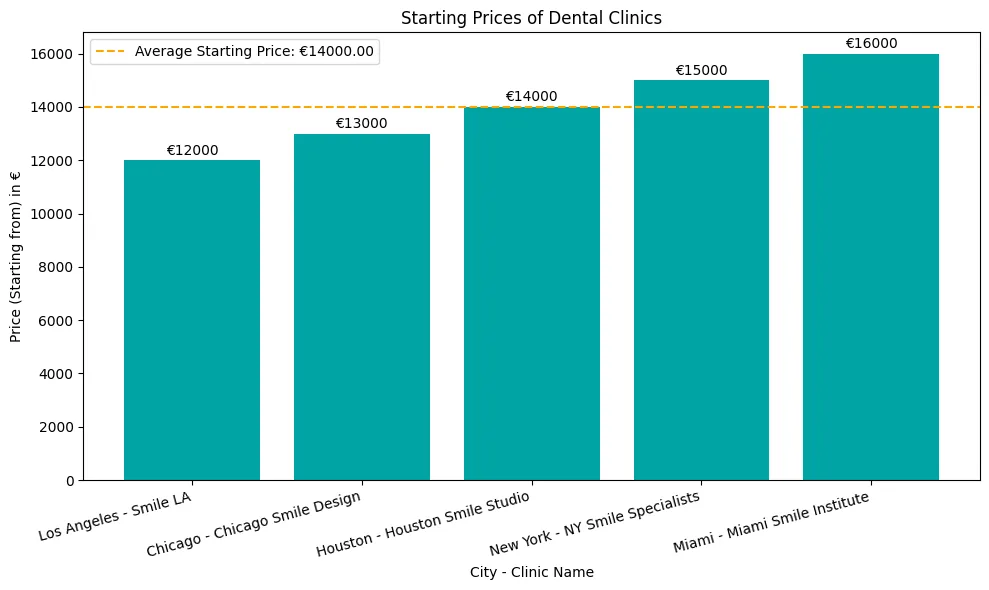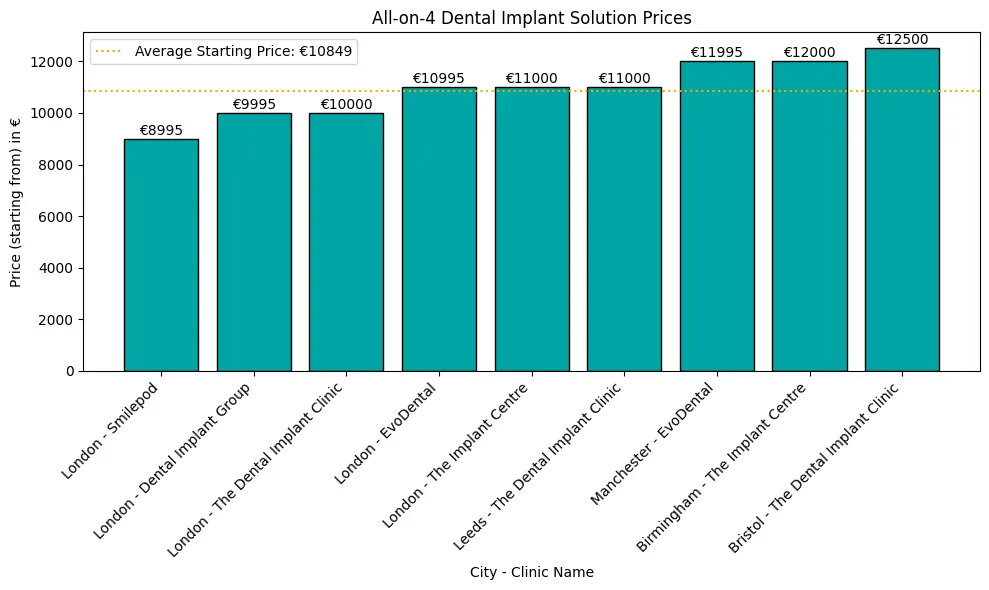Dental implant components & installation are a crucial consideration for those seeking a permanent solution to missing teeth.
If you’re one of the millions struggling with tooth loss, you’re likely wondering what makes up a dental implant and how it’s installed to ensure a natural-looking and functioning smile.
What are the components of dental implants?
The components of dental implants are: the implant, abutment, and prosthetic crown. The implant is surgically inserted into the jawbone, the abutment connects the implant to the crown, and the crown replaces the visible part of the tooth. With a success rate of over 95%, dental implants offer a durable solution, lasting up to 15 years.
| Component | Description | Material |
|---|---|---|
| Implant | Surgically inserted into the jawbone to replace the missing tooth root | Titanium |
| Abutment | Connects the implant to the prosthetic crown | Titanium or Ceramic |
| Prosthetic Crown | Replaces the missing tooth or teeth | Ceramic or Porcelain |
Dental Implant Components and Their Functions
Fixture (Implant Post)
The fixture, also known as the dental implant post, is the part of the dental implant that is surgically placed into the jawbone.
It’s usually made of titanium and is designed to integrate with the surrounding bone tissue.
Studies have shown that implants with smooth (turned) surfaces are less likely to lose bone due to chronic infection (peri-implantitis) than implants with rougher surfaces (1).
Abutment
The implant abutment is the connector that connects the implant post to the prosthetic crown.
It’s usually made of titanium or ceramic and is designed to provide a secure and stable connection between the implant and the crown.
There are various types of implant abutments, each designed for specific applications such as supporting crowns, bridges, or dentures.
Research has shown that the abutment is key to the success of the dental implant, with studies showing that the abutment can affect the stability and longevity of the implant (2).
Prosthetic Restoration (Crown, Bridge or Denture)
The prosthetic restoration is the final part of the dental implant, and it’s designed to replace the missing tooth or teeth.
An implant-supported denture is a type of prosthetic restoration that uses dental implants to provide stability and strength compared to conventional dentures.
It can be a crown, bridge, or denture and is usually made of ceramic or porcelain. Specific abutments are used to support dentures, ensuring a secure and stable attachment to the dental implants.
Research has shown that the prosthetic restoration can have a big impact on the patient’s quality of life, with many patients reporting improved chewing and speaking abilities and increased confidence and self-esteem (3).

Dental Implant Installation Steps
Placing the Dental Implant
Placing the dental implant is the most important part of the dental implant step-by-step process and timeline
It involves surgically placing the implant into the jawbone, where it will integrate with the surrounding bone tissue.
Research has shown that the placement of the implant can affect the outcome of the procedure, with studies showing that implants placed in the anterior maxilla have a higher success rate than those placed in the posterior maxilla (2).
Adding an Abutment to the Implant
Once the implant is placed, an abutment is attached to the implant to connect it to the prosthetic crown.
The abutment is usually made of titanium or ceramic and is designed to provide a secure and stable connection between the implant and the crown.
Research has shown that the abutment can affect the stability and longevity of the implant, with research showing that titanium abutments have a higher success rate than ceramic abutments (3).
Prosthetic Restoration
The final part of the installation process is the prosthetic restoration, where the prosthetic crown is attached to the abutment.
The prosthetic crown is usually made of ceramic or porcelain and is designed to replace the missing tooth or teeth.
Research has shown that the prosthetic restoration can have a big impact on the patient’s quality of life, with studies showing that patients who get a prosthetic restoration report improved chewing and speaking abilities and increased confidence and self-esteem (1).

Types of Dental Implant Components
Two-Piece vs. Three-Piece Implant Design
Dental implants can be classified into two main types: two-piece and three-piece implant design.
Two-piece implants are a single unit that combines the implant post and abutment, while three-piece implants have a separate implant post, abutment, and prosthetic crown.
The implant post is designed to mimic the structure and function of a natural tooth root, facilitating more natural chewing function and appearance.
Research has shown that two-piece implants have a higher success rate than three-piece implants, with a study showing that two-piece implants have a 97.6% success rate compared to 92.1% for three-piece implants (2).
| Implant Type | Success Rate |
|---|---|
| Two-Piece Implant | 97.6% |
| Three-Piece Implant | 92.1% |
Materials Used for Implant Components
The materials used for implant components can be different, but titanium is the most commonly used material because of its biocompatibility and durability.
Other materials used are ceramic and zirconia, which are also biocompatible and can provide a more aesthetic appearance.
A study showed that titanium implants have a higher success rate than ceramic implants, 95.5% vs 85.7% (1).
Dental implants not only mimic the appearance but also the function of natural teeth, providing a reliable solution for missing teeth.
Conclusion & Key-Takeaways
Key Takeaways:
Dental implants are a durable and aesthetic solution for missing teeth with a 95% and 97% success rate (1).
The main critical factors for osseointegration are the implant material, implant design, surface roughness, and surgical technique (2).
Dental implants can be a natural-looking and comfortable replacement for a missing tooth that can last for many years, with 98.9% at 3 years, 98.5% at 5 years, 96.8% at 10 years, and 94.0% at 15 years (3).
Conclusion:
Dental implants are a reliable solution for missing teeth, a natural-looking and comfortable replacement that can last for many years.
With a 95% and 97% success rate, dental implants are the go-to solution for those who want a permanent solution for tooth loss.
By knowing the components and installation process of dental implants, you can make an informed decision about your oral health and choose the best one for you.

FAQ
References
Esposito M, et al. Interventions for replacing missing teeth: different types of dental implants. Cochrane Database Syst Rev. 2014;(7):CD003815.
Article: Interventions for replacing missing teeth: different types of dental implants
Linkow LI. Dental implants: A review. J Oral Implantol. 2016;42(1):15-24.
Article: Dental implants: A review
Greenwell H, et al. Guideline for periodontal therapy. J Periodontol. 2001;72(11):1624-1628.
Article: Guideline for periodontal therapy



